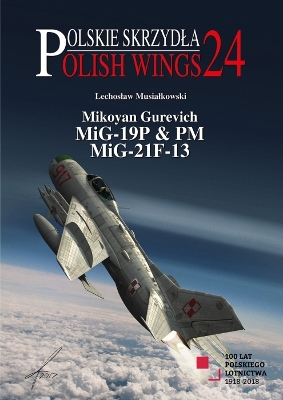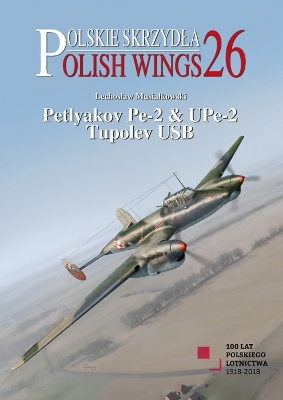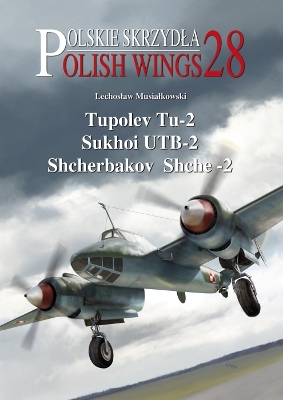Polish Wings
3 primary works • 4 total works
Book 24
This new book in the popular Polish Wings series tells the story of the first supersonic fighter in the Polish Air Force.
The MiG-19 and the first version of the MiG-21F-13 are described in unparalleled details. Many previously unpublished photographs come from private collections; colour schemes and markings are described and illustrated in a series of specially commissioned colour profiles.
The book includes over 120 photographs and nearly 30 colour plates to profusely illustrate these aircraft. Their technical details, military markings and maintenance stencils are shown in the detail.
The MiG-19 and the first version of the MiG-21F-13 are described in unparalleled details. Many previously unpublished photographs come from private collections; colour schemes and markings are described and illustrated in a series of specially commissioned colour profiles.
The book includes over 120 photographs and nearly 30 colour plates to profusely illustrate these aircraft. Their technical details, military markings and maintenance stencils are shown in the detail.
Book 26
This new book in the popular Polish Wings series tells the story of two famous Russian World War Two bombers in Polish Air Force service and colours.
The Petlyakov Pe-2 was a Soviet light bomber regarded as one of the best ground attack aircraft of the war; it was also successful in the roles of heavy fighter, night fighter and reconnaissance. The UPe-2 was a dedicated trainer version built in smaller numbers.
The Tupolev USB was a high speed twin-engined three-seat monoplane bomber, first flown in 1934 and numerically the most important bomber in the world in the late 1930s.
The book includes over 120 photographs and nearly 30 colour plates to profusely illustrate these aircraft. Their technical details, military markings and maintenance stencils are shown in the detail.
The Petlyakov Pe-2 was a Soviet light bomber regarded as one of the best ground attack aircraft of the war; it was also successful in the roles of heavy fighter, night fighter and reconnaissance. The UPe-2 was a dedicated trainer version built in smaller numbers.
The Tupolev USB was a high speed twin-engined three-seat monoplane bomber, first flown in 1934 and numerically the most important bomber in the world in the late 1930s.
The book includes over 120 photographs and nearly 30 colour plates to profusely illustrate these aircraft. Their technical details, military markings and maintenance stencils are shown in the detail.
Book 28
This new book in the popular Polish Wings series tells the story of three famous Russian bombers and trainers in the Polish Air Force during World War II and post-war.
The Tu-2 was a twin-engine Soviet high-speed daylight and frontline bomber aircraft of World War II vintage. The UTB-2 was derivative of the Tu-2, used as a trainer; the elimination of combat equipment meant it was much lighter and this allowed the use of less powerful engines. The Shche-2 was a twin-engined utility aircraft manufactured in the Soviet Union to meet an urgent requirement for a light transport and liaison aircraft during World War II.
The Tu-2 was a twin-engine Soviet high-speed daylight and frontline bomber aircraft of World War II vintage. The UTB-2 was derivative of the Tu-2, used as a trainer; the elimination of combat equipment meant it was much lighter and this allowed the use of less powerful engines. The Shche-2 was a twin-engined utility aircraft manufactured in the Soviet Union to meet an urgent requirement for a light transport and liaison aircraft during World War II.



